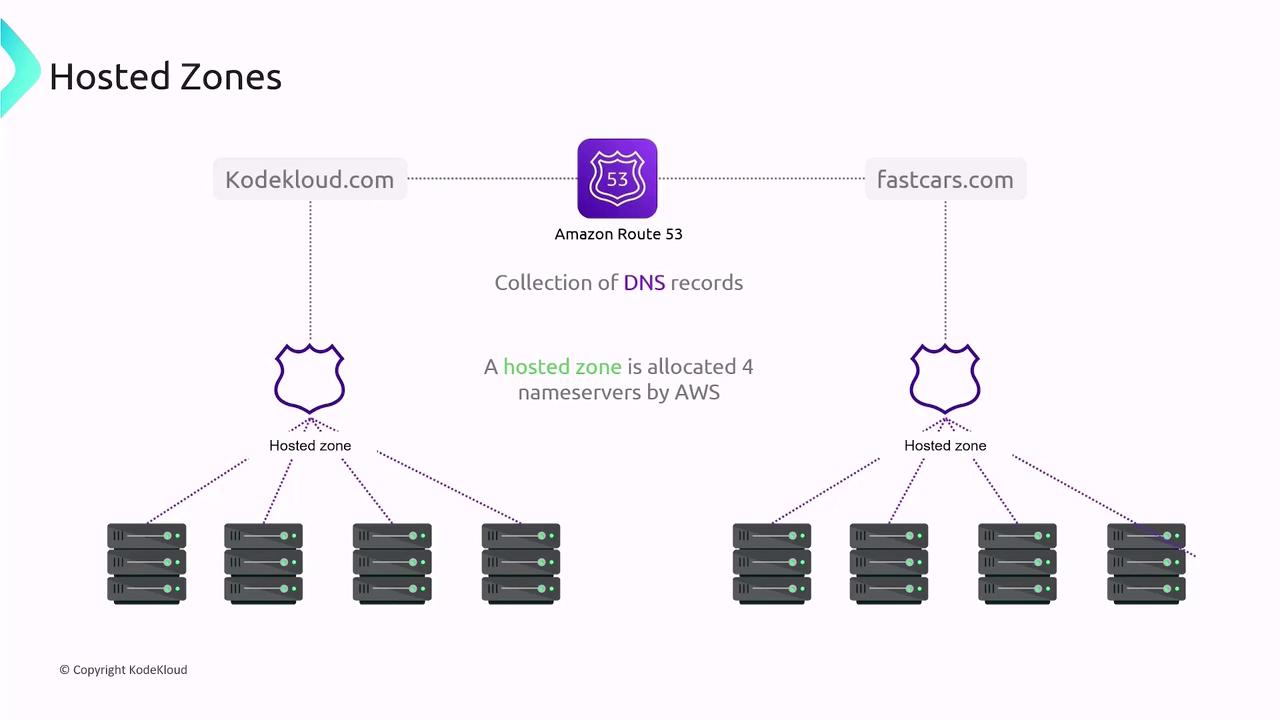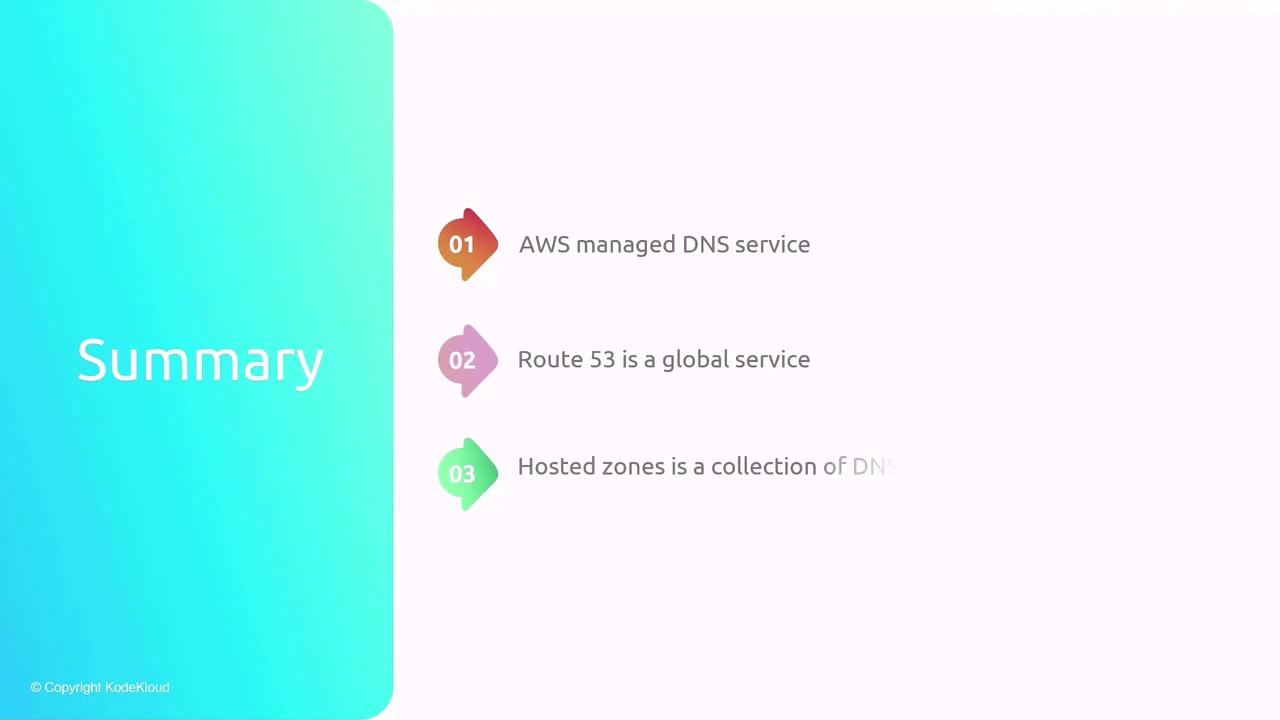AWS Networking Fundamentals
Core Networking Services
Route 53
Amazon Route 53 is AWS’s scalable and highly available Domain Name System (DNS) web service and domain registrar. With Route 53, you can register new domains, manage DNS records for routing internet traffic, and leverage a global network of DNS servers.
Key Features
- Domain registration and management as your registrar
- DNS record configuration for EC2, load balancers, S3 static websites, and more
- Highly available, low-latency global DNS resolution
Domain Registration and DNS Management
When you register a domain (e.g., example.com) through Route 53, AWS serves as your domain registrar. You can then configure all DNS records directly in the AWS Management Console, AWS CLI, or through the API.
Note
If you register the domain with Route 53, name servers are automatically set. For external domains, update the NS records at your existing registrar to point to the Route 53 name servers.
Hosted Zones
A hosted zone in Route 53 is a container for DNS records related to a specific domain or subdomain. AWS allocates four authoritative name servers for each hosted zone.
| Hosted Zone Type | Scope | Use Case |
|---|---|---|
| Public Hosted Zone | Global (Internet) | Serve public DNS queries |
| Private Hosted Zone | VPC (Virtual Private Cloud) | Internal DNS resolution within VPCs |

How It Works: Step by Step
- Create a hosted zone for your domain (e.g.,
fastcars.com). - AWS assigns four name servers to the hosted zone.
- Define DNS records (A, AAAA, CNAME, MX, TXT, etc.) in the hosted zone.
- Verify that your domain’s NS records at the registrar match the assigned name servers.
After these steps, Route 53’s global network of name servers will respond to DNS queries for your domain.
Common DNS Record Types
| Record Type | Description | Example |
|---|---|---|
| A | Maps a domain to an IPv4 address | www -> 192.0.2.44 |
| AAAA | Maps a domain to an IPv6 address | www -> 2001:0db8:85a3:0000:0000:8a2e:0370:7334 |
| CNAME | Aliases one name to another | blog -> blog.example.com |
| MX | Mail exchange servers for email routing | example.com MX 10 mail.example.com |
| TXT | Text records for verification/DNSSEC | example.com TXT "v=spf1 include:amazonses.com -all" |
Summary
Route 53 offers:
- Fully managed DNS service for end-user request routing
- Domain registration with AWS as the registrar
- Global DNS infrastructure for low-latency queries
- Hosted zones for organizing DNS records per domain

Links and References
Watch Video
Watch video content